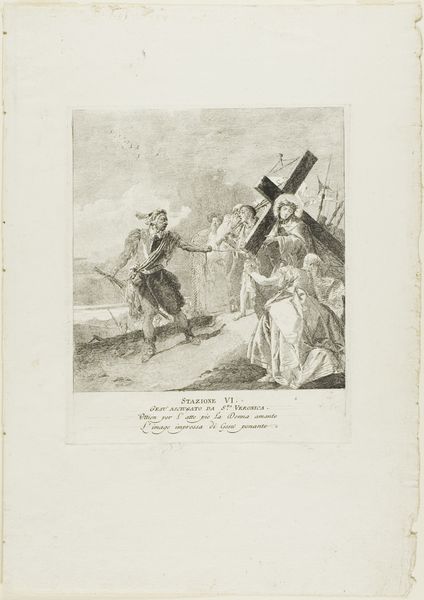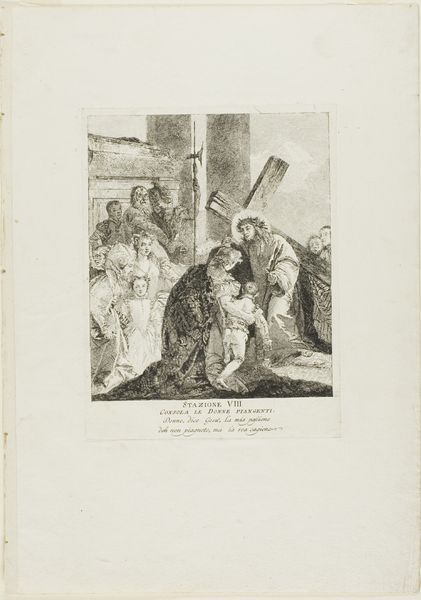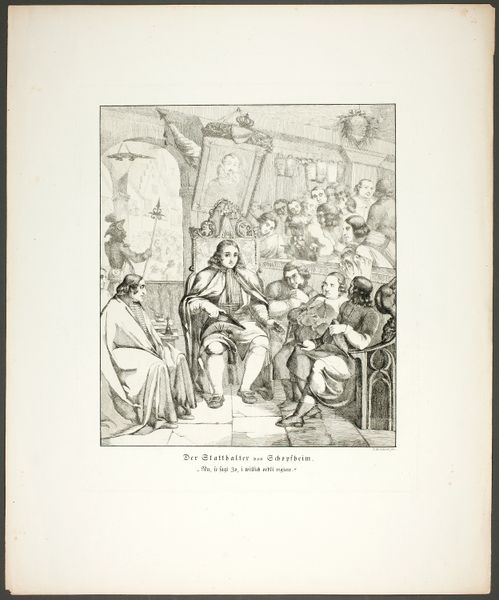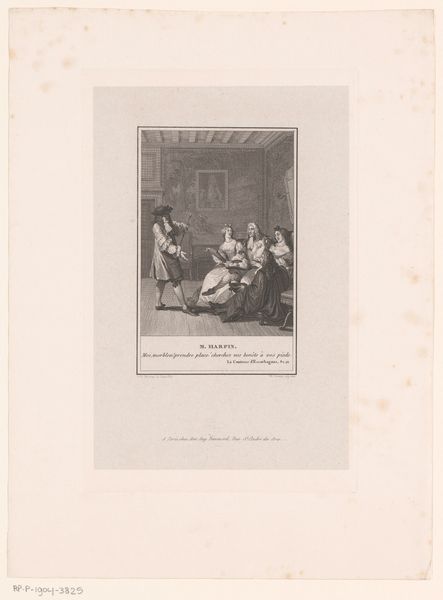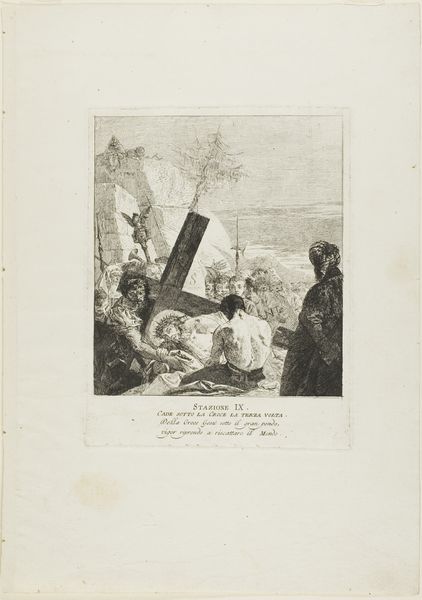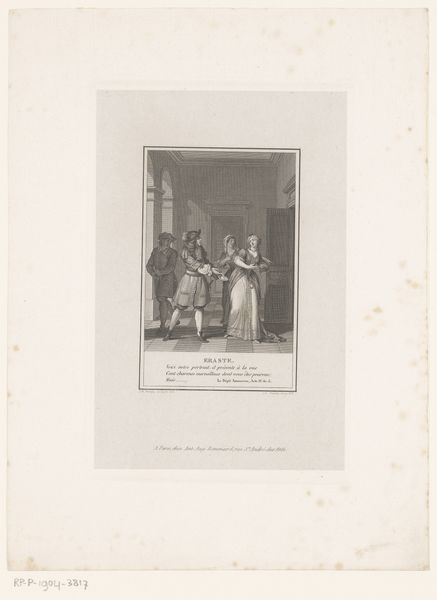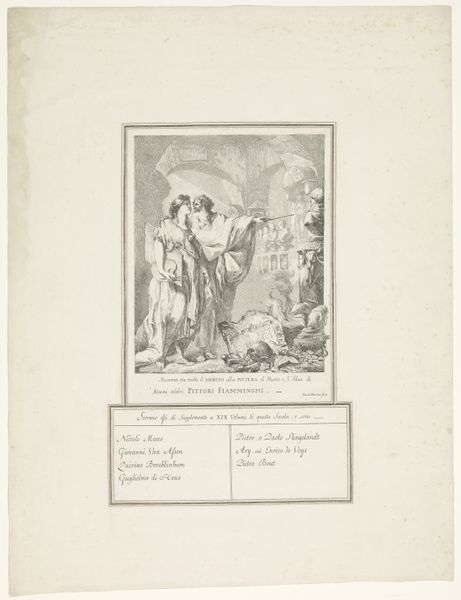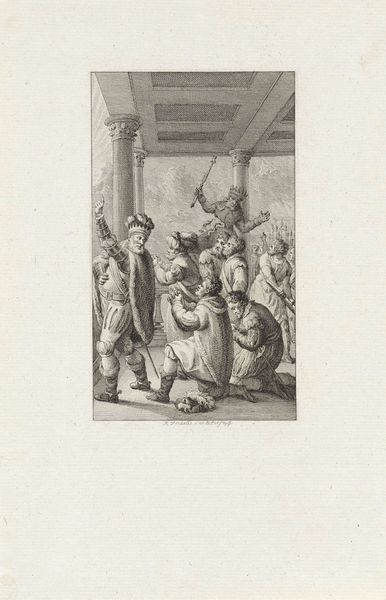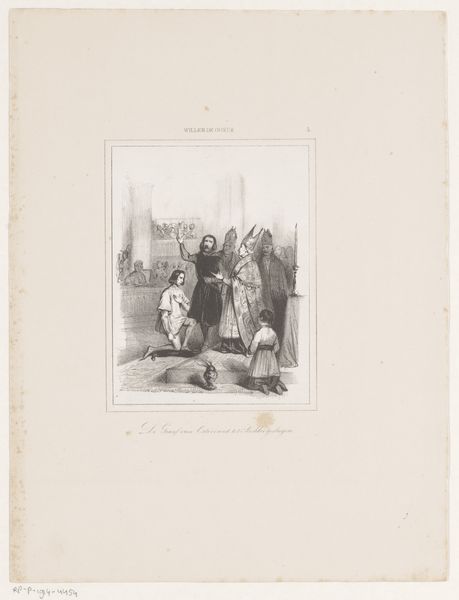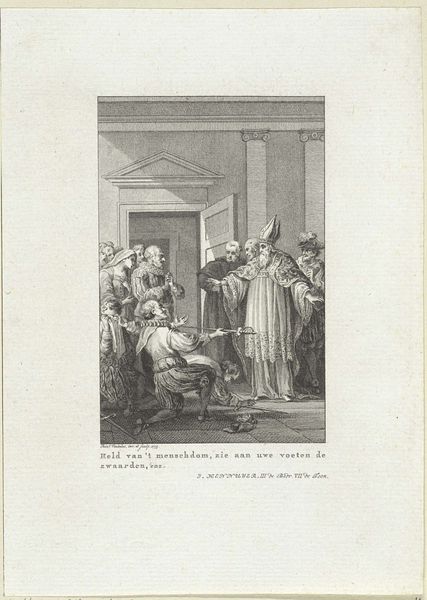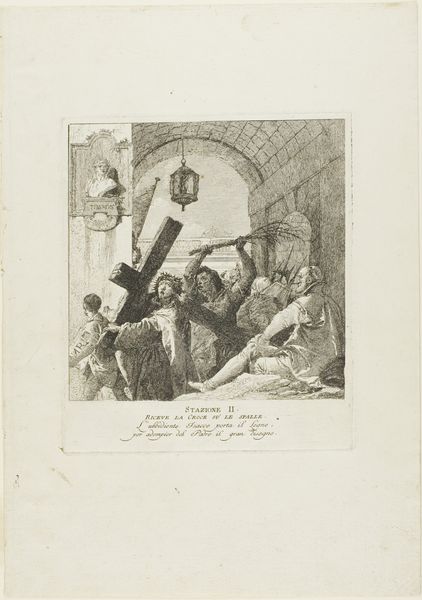
Christ Falls Beneath the Cross for the Second Time, plate seven from Stations of the Cross c. 1748 - 1749
0:00
0:00
drawing, print, etching, paper
#
drawing
#
narrative-art
#
baroque
# print
#
etching
#
figuration
#
paper
#
history-painting
Dimensions: 218 × 180 mm
Copyright: Public Domain
Curator: What strikes me immediately is the sheer bleakness of this piece. It's like a whisper of suffering, so fragile and yet so powerful. Editor: We're looking at "Christ Falls Beneath the Cross for the Second Time," plate seven from the series *Stations of the Cross,* crafted around 1748-1749 by Giovanni Domenico Tiepolo. This etching, now housed at The Art Institute of Chicago, speaks volumes about power, resistance, and suffering through its narrative. Curator: That's putting it mildly. The way Christ is depicted, almost crushed by the cross, it really brings home the brutal reality of his burden, doesn't it? And the faces...some indifferent, some maybe…sympathetic? Editor: Precisely. Tiepolo, in using etching, highlights not just the physical suffering but the systemic oppression inherent in the narrative. It’s a commentary on social hierarchies, on who bears the weight of injustice and who turns away. The looming figures observing Christ are interesting considering intersectional themes of complicity, indifference, and power dynamics. Curator: There’s something so raw about the medium itself too, you know? This printmaking style, the stark black lines, the negative space... it intensifies the emotional impact somehow. Editor: The bareness is a powerful aesthetic choice for sure. There are also ways we can think of the technique relating back to larger philosophical frameworks: how, perhaps, through the artwork itself the suffering of one man is transmitted into the very fibre of our own aesthetic experience. Curator: Hmmm... Well, the first time I saw this, it wasn't the philosophy, just this intense sense of… human brokenness, laid bare. I wonder how many people look at this today and still feel that jolt of recognition. Editor: The narrative's enduring relevance rests on the way suffering, both physical and systemic, is conveyed. Considering historical and present-day realities of marginalized groups and injustices is a crucial viewing lens here. This becomes less about religious history and more about societal ills we still struggle to correct. Curator: I can agree with that—thanks for highlighting the historical and social perspectives embedded in what seems like such a personally moving artwork to me. It has widened my appreciation for it, even after all these years. Editor: And likewise, I leave this discussion grateful for your reminder about art’s fundamental function: connecting us to the immediate experience of the emotions. It offers ways to explore deeper connections to historical injustices.
Comments
No comments
Be the first to comment and join the conversation on the ultimate creative platform.
